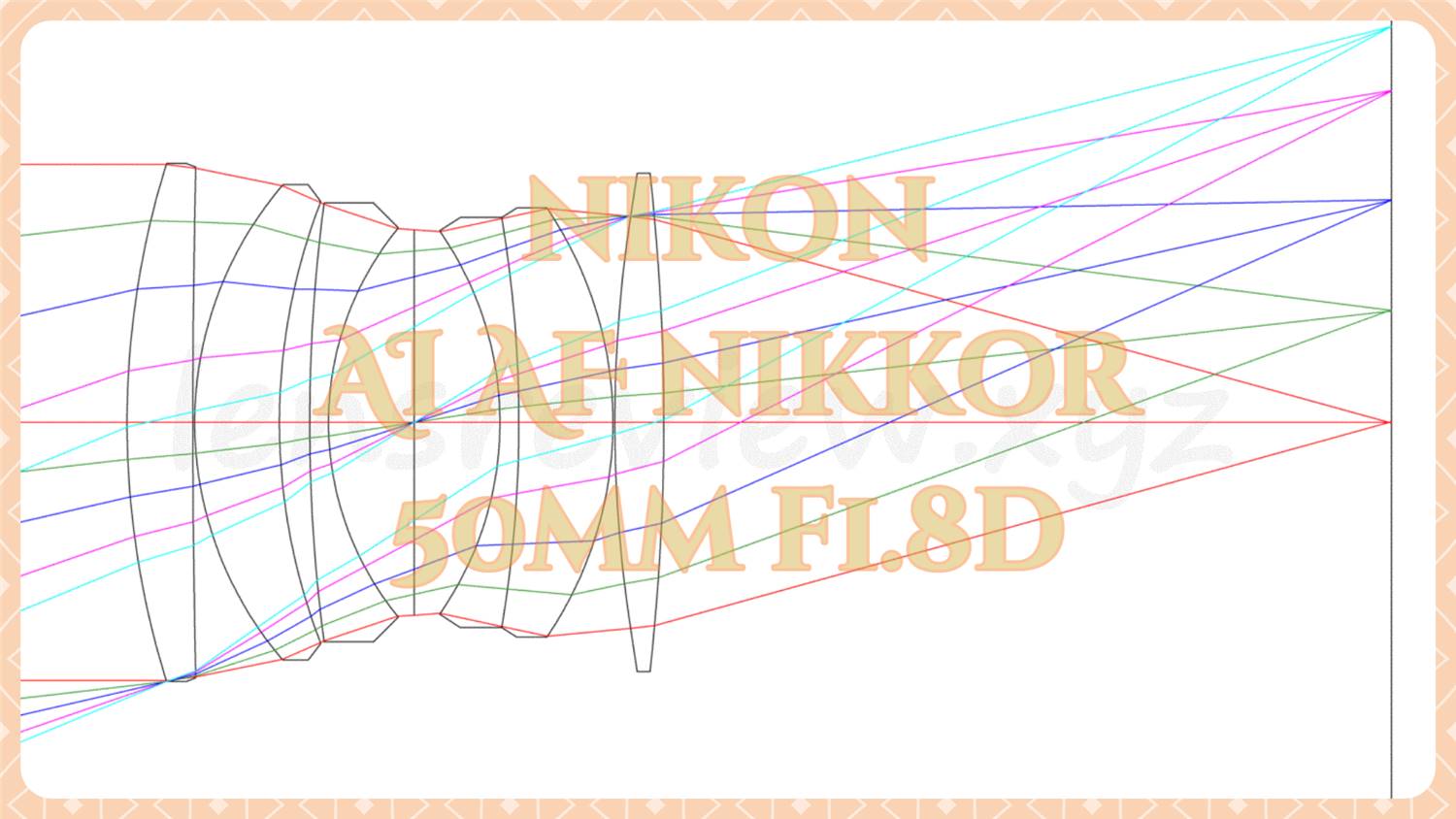dourbalistar
Buy more film
Unfortunately, my pockets are not deep enough for the Noct-Nikkor. Instead, I have the more price-accesible Nikkor-S Auto 55mm f/1.2. I believe mine is a Version 3 circa 1971-72, factory converted to AI. But that's a different lens (from a different era) for a different thread.If you like this era of Nikkors, low light is what the Ai-S Noct-Nikkor was made for, really. But don’t expect to get one for the price of the pancake.
View attachment 4828042
Marty
Nikkor-S 55mm f/1.2 Experiences?
Hey Folks! I have the opportunity to buy a Nikkor-S 55mm f/1.2 locally for an incredible price. The lens is 9/10 condition with only slight wear on the barrel (glass is immaculate) and the gentleman is selling it for less than half the price of what one in similar condition goes for. The...
 rangefinderforum.com
rangefinderforum.com
dourbalistar
Buy more film
Haha, yes, image stabilization and a thousand million ISO with modern digital cameras definitely falls in the "other tools" category.Of course for low light images, if using the pancake adapted on today's image stabilised digital mirrorless cameras and their previously unachievable iso capabilities with this lens, there's a lot of scope for, for want of a better phrase "getting away with it" which I beleive was the case with the below image.
Untitled by Otim, on Flickr
Freakscene
Obscure member
The same formula, but if you use them with black and white film you'll see a lot of difference in tonality, especially the highlights, due to very different internal coating and light damping.I've heard that the 50/1.8 AF-D is exactly the same lens as the Japanese pancake lens, but in different clothes. Said to be optically the same.
Freakscene
Obscure member
Oh sure, the 55/1.2 is very good in low light too, as is the 50/1.2 Ai-S. The Noct-Nikkor is definitely not cheap.Unfortunately, my pockets are not deep enough for the Noct-Nikkor. Instead, I have the more price-accesible Nikkor-S Auto 55mm f/1.2. I believe mine is a Version 3 circa 1971-72, factory converted to AI. But that's a different lens (from a different era) for a different thread.
Nikkor-S 55mm f/1.2 Experiences?
Hey Folks! I have the opportunity to buy a Nikkor-S 55mm f/1.2 locally for an incredible price. The lens is 9/10 condition with only slight wear on the barrel (glass is immaculate) and the gentleman is selling it for less than half the price of what one in similar condition goes for. The...rangefinderforum.com
Marty
dourbalistar
Buy more film
Nikon FM2n, AI Nikkor 50mm f/1.8S, Kentmere Pan 400, developed in LegacyPro L110 at 1:31 for 5.5 minutes.

2023.04.13 Roll #330-08067-positive.jpg by dourbalistar, on Flickr

2023.04.13 Roll #330-08067-positive.jpg by dourbalistar, on Flickr
dourbalistar
Buy more film
Nikon FM2n, AI Nikkor 50mm f/1.8S, Kentmere Pan 400, developed in LegacyPro L110 at 1:31 for 5.5 minutes.

Upper Inspiration Point Triptych by dourbalistar, on Flickr

Upper Inspiration Point Triptych by dourbalistar, on Flickr
dourbalistar
Buy more film
Nikon FM2n, AI Nikkor 50mm f/1.8S, Kentmere Pan 400, developed in LegacyPro L110 at 1:31 for 5.5 minutes.

2023.04.22 Roll #333-08102-positive.jpg by dourbalistar, on Flickr

2023.04.22 Roll #333-08102-positive.jpg by dourbalistar, on Flickr
dourbalistar
Buy more film
Nikon FM2n, AI Nikkor 50mm f/1.8S, Kentmere Pan 400, developed in LegacyPro L110 at 1:31 for 5.5 minutes.

2023.07.07 Roll #336-08194-positive.jpg by dourbalistar, on Flickr

2023.07.07 Roll #336-08194-positive.jpg by dourbalistar, on Flickr
sojournerphoto
Mentor
This is such a great pictureNikon FM2n, AI Nikkor 50mm f/1.8S, Kentmere Pan 400, developed in LegacyPro L110 at 1:31 for 5.5 minutes.
2023.04.22 Roll #333-08102-positive.jpg by dourbalistar, on Flickr
dourbalistar
Buy more film
Thank you for the kind words, much appreciated!This is such a great picture
dourbalistar
Buy more film
Accidentally left the aperture at f/2.8 (I meant to stop down more), but the result is sharper than I expected. There's enough detail at the center of the frame to make out a fire lookout on the silhouette of the ridge.
Nikon FM2n, AI Nikkor 50mm f/1.8S, Kentmere Pan 400, developed in LegacyPro L110 at 1:31 for 5.5 minutes.

2023.08.05 Roll #339-08251-positive.jpg by dourbalistar, on Flickr
Nikon FM2n, AI Nikkor 50mm f/1.8S, Kentmere Pan 400, developed in LegacyPro L110 at 1:31 for 5.5 minutes.

2023.08.05 Roll #339-08251-positive.jpg by dourbalistar, on Flickr
Slumgullion
Established
Not sure if this article has been linked in the previous 41 pages:

 lensreview.xyz
lensreview.xyz
Google translate has gotten so much better with Japanese-to-English in the last few years. You can actually read this...and it makes sense.
Fun little tidbit...the 50/1.8 was made using only two glass types. Makes you really appreciate the efficiency and economy of design.

【深層解説】 ニコン標準レンズ NIKON AI AF NIKKOR 50mm F1.8D-分析016
NIKON NIKKORレンズシリーズより伝統の大口径標準単焦点50mm F1.8Dを特許情報と実写による作例から分析します。
 lensreview.xyz
lensreview.xyz
Google translate has gotten so much better with Japanese-to-English in the last few years. You can actually read this...and it makes sense.
Fun little tidbit...the 50/1.8 was made using only two glass types. Makes you really appreciate the efficiency and economy of design.
dourbalistar
Buy more film
Thanks for sharing that! Economy of design that actually translated to economy of price, too! I found this Google translation hilarious, even though I'm not quite sure what to make of it:Not sure if this article has been linked in the previous 41 pages:

【深層解説】 ニコン標準レンズ NIKON AI AF NIKKOR 50mm F1.8D-分析016
NIKON NIKKORレンズシリーズより伝統の大口径標準単焦点50mm F1.8Dを特許情報と実写による作例から分析します。lensreview.xyz
Google translate has gotten so much better with Japanese-to-English in the last few years. You can actually read this...and it makes sense.
Fun little tidbit...the 50/1.8 was made using only two glass types. Makes you really appreciate the efficiency and economy of design.
This Nikon 50mm f/1.8 is generally referred to as a "bait lens", and if you buy it on impulse due to its low price, it is a product that has a terrible curse-like power that will drag you into a dark and deep lens swamp.
Slumgullion
Established
Google translate is doing a good job translating fairly descriptive, colorful prose in a way that only a robot would.Thanks for sharing that! Economy of design that actually translated to economy of price, too! I found this Google translation hilarious, even though I'm not quite sure what to make of it:
Freakscene
Obscure member
I laugh, but I have a corner of a room that is definitely a ‘lens swamp’. Sad.Thanks for sharing that! Economy of design that actually translated to economy of price, too! I found this Google translation hilarious, even though I'm not quite sure what to make of it:
dourbalistar
Buy more film
Nikon FM2n, AI Nikkor 50mm f/1.8S, Kentmere Pan 400, developed in LegacyPro L110 at 1:31 for 5.5 minutes.

2023.07.07 Roll #336-08217-positive.jpg by dourbalistar, on Flickr

2023.07.07 Roll #336-08217-positive.jpg by dourbalistar, on Flickr
dourbalistar
Buy more film
Nikon FM2n, AI Nikkor 50mm f/1.8S, Kentmere Pan 400, developed in LegacyPro L110 at 1:31 for 5.5 minutes.

2023.08.05 Roll #339-08249-positive.jpg by dourbalistar, on Flickr

2023.08.05 Roll #339-08249-positive.jpg by dourbalistar, on Flickr
dourbalistar
Buy more film
Nikon FM2n, AI Nikkor 50mm f/1.8S, Kentmere Pan 400, developed in LegacyPro L110 at 1:31 for 5.5 minutes.

2023.07.07 Roll #336-08207-positive.jpg by dourbalistar, on Flickr

2023.07.07 Roll #336-08207-positive.jpg by dourbalistar, on Flickr
hellojamin
Member
Great photo, what do you use to scan?Nikon FM2n, AI Nikkor 50mm f/1.8S, Kentmere Pan 400, developed in LegacyPro L110 at 1:31 for 5.5 minutes.
2023.07.07 Roll #336-08217-positive.jpg by dourbalistar, on Flickr
dourbalistar
Buy more film
Thank you for the kind words, @hellojamin, and welcome to the forum!Great photo, what do you use to scan?
All my B&W photos are home developed and digitized using an old Sony NEX-5T digital camera. I use a Voigtlander VM-E close focus adapter on a Leica BEOON copy stand, with an EL-Nikkor 50mm f/2.8 enlarging lens, and a Huion L4S light pad from Amazon. For 120 film, I take two (or three for 6x7) overlapping frames, and merge them in Lightroom using the "Panorama Merge" function. I hope that helps!
Share:
-
This site uses cookies to help personalise content, tailor your experience and to keep you logged in if you register.
By continuing to use this site, you are consenting to our use of cookies.

